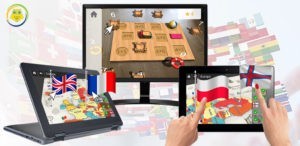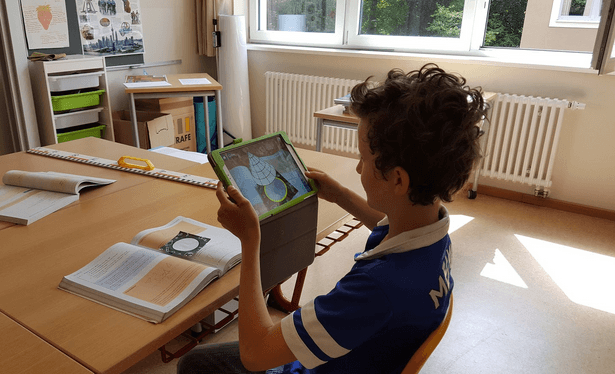.Reading time: 17 minutes
A back-to-school guide for teachers and parents about social shifts, technological developments and their relationship to each other
A back-to-school guide for teachers and parents is vitally important. CleverBooks will keep you to up date with new technologies.
Today, as we are witnessing incredible technological progress, as well as rapid changes in collective mindsets and contemporary approaches to everyday aspects of life, it has become every single educator’s responsibility to stay up to date, utilize the most effective teaching methods available to them and be aware of the most current, pressing trends and issues.
But the landscape of education technology (EdTech), as well as the arena of social and political trends and opinions, has grown so complex, so all-encompassing, that it is becoming more and more difficult for the “ordinary” teacher or parent to see what the most important questions surrounding their students’ or children’s education really are.
This is where we come in. In this comprehensive article, we want to present you with 7 major trends and issues that you should be aware of in the upcoming academic year, so you can stay on top of your game and address the challenges of today’s youth appropriately.
With that in mind let us have an overview of seven important trends for back to school in 2018-2019:
- TREND #1: Cyber Security for kids
- TREND #2: Era of Relative Truth
- TREND #3: Data and Cloud
- TREND #4: Technology and BYOD
- TREND#5: Gamification of Learning
- TREND #6: Augmented Reality and Emerging Tech
- TREND#7: Creative Makerspaces
1.Anxiety, cyber-bullying and other challenges for today’s youth

Point 1
To start, I want to recap on a range of topics that are among the key challenges for today’s students and young adults. Firstly, there is cyber-bullying. Not a new phenomenon itself, it has recently been shown that 42% of US students have been threatened online at least once, and that half of all victims fail to communicate their problems to teachers or parents[1]. As schools slowly adopt 1:1 device spread or Bring-Your-Own-Device-programs (BYOD), more of these incidents occur within school hours and -facilities.
Point 2
Secondly, there is student anxiety. Partially due to the era of high-stakes standardized testing (compare Jeremy S. Adams on The Educators Room[2]) that treats students as an anonymous mass in a one-fits-all-approach, and the extreme stress often connected to that, students become increasingly prone to anxiety, fear of failing tests, fainting in class and seemingly insuperable mental blockades. Individual strengths are not often enough recognized and fostered by the prevalent systems, and students are falsely categorized as less capable than others upon generic criteria and assessment methods.
Especially students that have difficulties to make friends quickly and blend in with their class, have trouble to keep up with the curriculum or feel unappreciated as human beings in their school find solace and retreat in virtual online spaces that are largely out of the reach of adults’ control. Further increasing isolation and often encouraging feelings of being an outsider, this can then lead to dangerous or even life-threatening situations in the form of self-harm and suicidal tendencies. Paraphrasing Jeremy Adams, one can say that after all, the opportunities for new ways of learning that emerge from progress are endless, but so are the opportunities for reckless and dangerous behaviour.
Ideas
There are countless other issues connected to this, many of which revolve around mental health, but at this point we want to direct the reader towards the solutions that are out there for the problems that are a side-effect of the great benefits that technology has for education: As a first example, activity on school devices can be monitored with the respective software, which can detect when students bully others online, are being bullied or when dangerous situations emerge, such as when searching for ways of suicide online. After all, being proactive in detecting and deterring students’ problems has become a key responsibility of the modern educator on the individual, school and district level
2.Politicized schools and the era of relative truth
Moving slowly from more social issues to technology, the next big topic that has to appear on this list is the issue of schools becoming hotspots for political discussions and the source of political movements such as the Parkland survivors’ #neveragain-movement. Schools nowadays are “at the intersection of division and discord”, to quote Jeremy Adams again. From transgender bathrooms to gun-law discussions, equal rights issues and environmental protection, the topics that have found their way into the classroom, not at last because of parents’ and teachers’ individual efforts to spread their beliefs, are countless.
It, therefore, seems like some educators need to be reminded that, in school, what should be taught is not what to think, but how to think. Being aware and considerate of the big range of possible opinions on complex topics should be a core goal of every teacher, along with abolishing narrow-mindedness and age-old beliefs.
To reflect
The same is true for what is often called ‘helicopter parents’. Nowadays, we are drifting towards a system in which the student can never be wrong, and towards a parent community that incites major conflicts because of a students’ feeling of being treated unfair, or the teacher being “disrespectful” to them.
We are not saying that this is never true, as we just pointed out that not enough students speak up about their problems in school. What we are saying is that, in this time and age, where fake news dominate the (social) media landscape and reason and facts are no longer viewed as the objective truth, there is a certain need to remind students that, although everyone is entitled to his or her own feelings, these feelings do not justify groundless accusations or disruptive behaviour and can not be allowed to be used as a tool for making teachers’ lives unnecessarily tough[2].
3.Data Analytics and Cloud Computing
At this point, I doubt that there are educators out there that have never heard about at least one of these words, as they have been around for some time. Anyway, they act as the first of the bridges that we want to span to connect the problems listed so far, with the solutions offered by technology.
The point where it becomes incredibly hard for the average, human educator to identify individual student’s strengths, weaknesses and problem areas, is the point where data analytics and algorithms come in. Tracking, monitoring and analysing large pools of data allows conclusions regarding the holistic performance (and performance growth or decline) of single students, classes or schools in various fields, compare them and, for example, identify best practices.
How?
Understanding your students better should be a constant aim of yours, simply because you as a teacher or parent care about them and their academic success. In the end, we measure teacher’s upon the basis of students’ success. And like with every good research that aims to understand something better, the most consistent findings can be made through observable, empirical data, viewed and evaluated by an attentive researcher.
Cloud computing then on the other hand makes it possible to share this data online, view it from multiple devices at the same time and even open it up to parents or other relevant bodies, decreasing the risk of the accusations based on relative truth occurring. Software like Google Classroom allows you to share tasks and answers, homework and other data with your student. One can access it from home and share of online resource in classroom discussions.
4.Technology to create, 1:1 networks and BYOD trends

As mentioned before, 1:1 device spread is becoming increasingly popular, and so are BYOD programs as a way to ensure this spread without schools having to pay a fortune for new devices. Educators know that an alternative to trying to raise funds for new devices is buying refurbished ones. They need to find a reliable supplier.
Tech to Create
What do we now mean with technology to create? Well, there are two sides from which every online platform or network can be used: You can consume content, and/or you can create content. However, there seems to be a general trend among children and teenagers in recent years to consume more than to create, with big YouTube channels consolidating millions of subscribers and popular social media influencers being one of the top choices for promotion channels among businesses today. This imbalance results in many adults perceiving devices solely as a distraction from life and education, as something very unhealthy that leads to social media addictions.
Trend
Not regarding whether you belong to this group or not, technology facilitates, accelerates and enhances aspects of our life, and this holds true for content creation. The possibilities that mobile devices offer for creating educational resources on the teachers’, and for doing homework and preparing creative presentation or videos on the students’ side are endless. Students, who are usually reluctant to speak to the teacher in class, often excel in preparing video recordings as answers to questions, where they feel safe and can start over again as many times as they want. This then acts as a first step to integrate them better into the classroom society and make them realize their own strengths, strongly cutting the probability of developing depression and anxiety.
To reflect
The range of tools available is endless, and you definitely should start looking for the ones that suit you best. To start, have a look at Jennifer Gonzales’ list of the six best EdTech tools of 2018. All of them are so simple, yet so amazingly promising, and all of them have an incredible potential to empower children to express their own individuality and personality, discover their own strengths and learn with fun.
5.Games and gamification in Teaching
Yes, games and gaming has been around a long time. But long gone are the days of games being a pure recreational tool; today, gaming has found its way into the business world. We call it ‘Gamification’ and use it to increase productivity and motivation by e.g. designing incentive programs for employees that feature rewards, leader boards and badges and not uncommonly mobile-enabled.
Games
Being defined as the “integration of gaming elements, mechanics and frameworks into non-game situations and scenarios”[3], Gamification has been shown to stimulate very fast learning and enhance productivity and creativity as competition is paired with fun, and gamification elements are quickly gaining support by educators. The potential benefits of gamification make for a long list and include e.g. increased participation, engagement and loyalty.
To reflect
There are several ways to bring gamification into your classroom, from establishing an Experience Point (EXP) System that features different levels of skill mastery to awarding students with badges. No matter how involved you yourself are with gaming and how much you know about common game elements, there is always a way to make your grading system or homework collection more interesting by integrating colourful or creative elements and spicing up the vocabulary used for the procedures and systems used in your classroom with terms that are closer and more familiar to your students. For example, make the homework a treasure hunt or ‘quest’ or let your students work towards the completion of a progress bar (like e.g. the progress bar used by LinkedIn to incentivize you to complete your profile) over the academic year. There really are no limits to your own creativity once you start brainstorming.
6.Augmented Reality & Immersive learning environments. Technology Trend
Then, within a stone’s throw of Gamification, there lies the area of Mixed Reality technologies, a word that acts as an umbrella term for all the immersive technologies like Virtual Reality (see for example Oculus VR or the PlayStation VR System) and Augmented Reality (Snapchat Animal Filters, the new iPhone X animated emojis or even Pokémon Go).
While Virtual Reality, where the user completely “enters” a virtual scenario by isolating him/herself from their environment with a headset, is usually rather unsuitable for in-classroom use, the potential of Augmented Reality (AR) is massive. Augmented Reality, as the word says, augments or enhances your real-life environment by analysing it through the camera of a device and then adding digital elements to it. Technology triggers the elements via a particular real-life element (also called a ‘marker’).
Technologies
These technologies can then be used to mimic realistic situations as an innovative approach to training and teaching learners in all types of setting and industry and apply their skills to real, yet risk-free situations. The field of Immersive Learning Environments (ILEs) is composed of various learning techniques. They include 3D visualization technologies and simulations, many of which prove to strongly foster student engagement and accelerate knowledge and skill acquisition (based on a study conducted by the United States National Library of Medicine). Looking at the emerging consensus that ILEs are among the best ways to become familiar with topics that are difficult to explain and visualize on a 2D-medium, such as anatomy, architecture and industrial production systems, understanding that the same holds true for children who are e.g. trying to understand geometrical shapes seems like a no-brainer.
To reflect
At this point we would like to direct you at our own business, CleverBooks, a Dublin-based provider of cost-effective Augmented Reality solutions for primary education, focusing on bringing subjects to life through 3D visualization. We have just released our Geography World Map with AR. All our products are curriculum-based and function as a comprehensive supplementary teaching aids to your normal teaching resources, and can lead to tremendous learning in 5 key skills that kids will need for the jobs of the 21st century. Getting familiar with our products takes less than an hour, and teachers can start implementing them the next day.
7.Creative Makerspaces as Back to School
With this last topic, we want to complete the small journey which we started looking at the problems of today’s education system, ending with one of the most innovative ways to cope with them and adapt education to our modern age.
Creative Makerspaces, also called FabLabs, Hackerspaces or similar, are workshop-like areas that allow students to explore their own capabilities and fantasy with the help of most innovative technological equipment. Teachers can use collaborative, tangible experience revolving around creating and inventing in schools. 64% of middle school students believe that technology makes their learning more interesting, and an environment that acts like a library equipped with a 3D-printer, a range of creative computer software and hardware and other equipment for creative arts like drawing or sculpting therefore can be of incredible value.
STEM
With the adoption of STEM-policies in many countries in recent years, we need to pay attention to makerspace. An accessible learning environment motivates intentional play and “safe risk”. It is inclusive and flexible and based on most innovative technology. This environment holds the potential to draw huge numbers of kids towards science and technology. Teachers can use the right visualization techniques to explore some curricula topics.
To reflect
The downside to this, obviously, is the cost of this kind of high-tech equipment. Although 3D printers and many comparable devices have become much more affordable in recent years, teachers and schools on a tight budget should especially be looking at online makerspaces. They usually provide an excellent selection of creative software. Just like physical makerspaces, they contribute strongly to children finding their own individual approach towards knowledge retention. Kids needs to discover their strengths and interests and to experience truly valuable, collaborative learning.
To close this off
All of these 7 topics entail enormous potential for further research and discussion. The best we can do in this article is to give you an overview of what issues to investigate further. In the end, it comes down to the effort that the individual teacher or parent makes to keep up. We believe that it is among the duties of the modern educator to never stop learning, themselves.
What are the biggest problems in your class, school, district or country? What are the challenges that you are facing as an educator? Or see your students or children face in this digital, rapidly-paced time and age? What value do you see in the technologies listed here, and what other solutions are you wishing for?
Disclaimer
Please note that none of the research cited in this article has been conducted by the author himself or CleverBooks Ltd. The full copyright remains with the authors of the sources listed below. Should you encounter problems with the way your article or findings are displayed in this article, please do not hesitate to contact me at mail@cleverbooks.eu and we will solve your query together.
Text written by: Clemens Braakmann
Sources, References and proposed further reading
[1] Ascione, L. at https://www.eschoolnews.com/2018/01/05/industry-experts-10-education-trends-2018/
Gilbert, G. (2016) at http://www.precioustatus.com/new-technology-trends-in-education/
[3] Huotari, K., & Hamari, J (2012), “Defining Gamification – A Service Marketing Perspective”
Holloway, S. (2017) at https://tophat.com/blog/gamification-education-class/
Kominiak, T. (2016) at https://www.k12insight.com/trusted/whats-next-for-education-emerging-tech-trends-for-2017/
New Media Centres Website at https://www.nmc.org/pdf/2013-technology-outlook-for-STEM-education.pdf
[2] Strauss, V. (2018) at https://www.washingtonpost.com/news/answer-sheet/wp/2018/04/18/ten-problems-teachers-did-not-have-to-deal-with-a-decade-ago/?noredirect=on&utm_term=.42ff08a2a0ee
Nelson, P. (2016) at https://www.networkworld.com/article/3092446/smartphones/we-touch-our-phones-2617-times-a-day-says-study.html
Raupp, A. (2017) at https://www.siliconrepublic.com/careers/stem-education-emerging-trends

